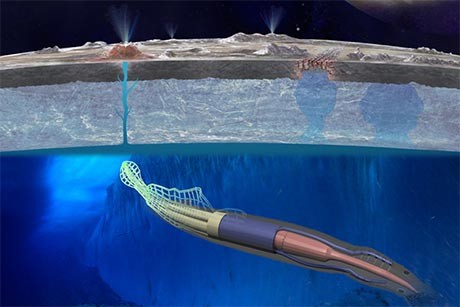Scientists are now venturing into a highly futuristic concept when it comes to exploring Jupiter's moon Europa with eel like robots.
The robots will be developed into soft robots that are flexible with the ability to stretch, possessing electroluminescent skin and even tentacle like arms.
This special robot will function by gathering electrical energy from magnetic fields in order to generate oxygen and hydrogen. Oxygen and hydrogen will be used as propellants that will be ignited internally to create energy to travel along the ocean under the icy surface of the moon or on the surface as well.
The robot's skin will also illuminate the surrounding areas where it will simultaneously capture and record photos with its onboard camera.
NASA will be supporting this concept originally by Cornell University researchers where the space agency granted the team with an award for the NASA Innovative Advanced Concepts (NIAC) program. Under this special program, NASA also selected 15 projects and granted each of them US $100,000.
According to the NIAC website, these soft robotics will further promote scientific investigation or human precursor missions that are not possible with solar or even nuclear power.
Cornell University researchers proposed for the robot to harvest energy emanating from Jupiter's powerful magnetic fields that can also provide enough energy for all the robot's systems.
Researchers further explain this unique power system for the robot where it will use electricity that can electrolyze the water by splitting oxyhen and hydrogen molecules. This can produce energy which will be stored internally specifically in the body and limbs of the robot.
The gases will be then mixed and ignited upon command that can further propel the robot with explosions that can make the robot to expand and contract, allowing it to swim or by using the explosions directly to the exhaust at the tail end of the robot that will force the robot to jet forward into water like an octopus.
This concept is now under TRL1 level of NASA which means that the basic principles are now being observed. A space mission to Europa requires a level of TRL9 which can allow plenty of time to explore more ways in terms of robotic capabilities along with unique energy harvesting propellant systems when it comes to exploring other worlds.



























